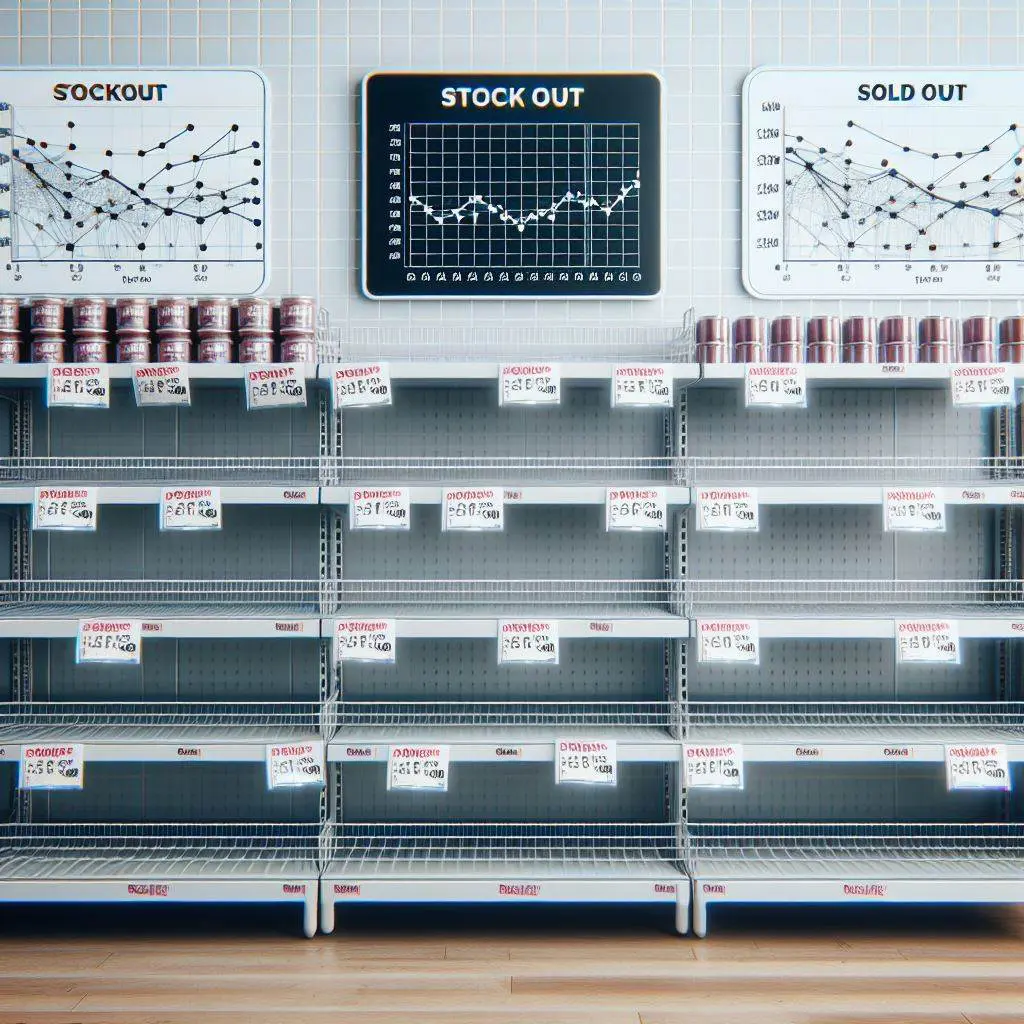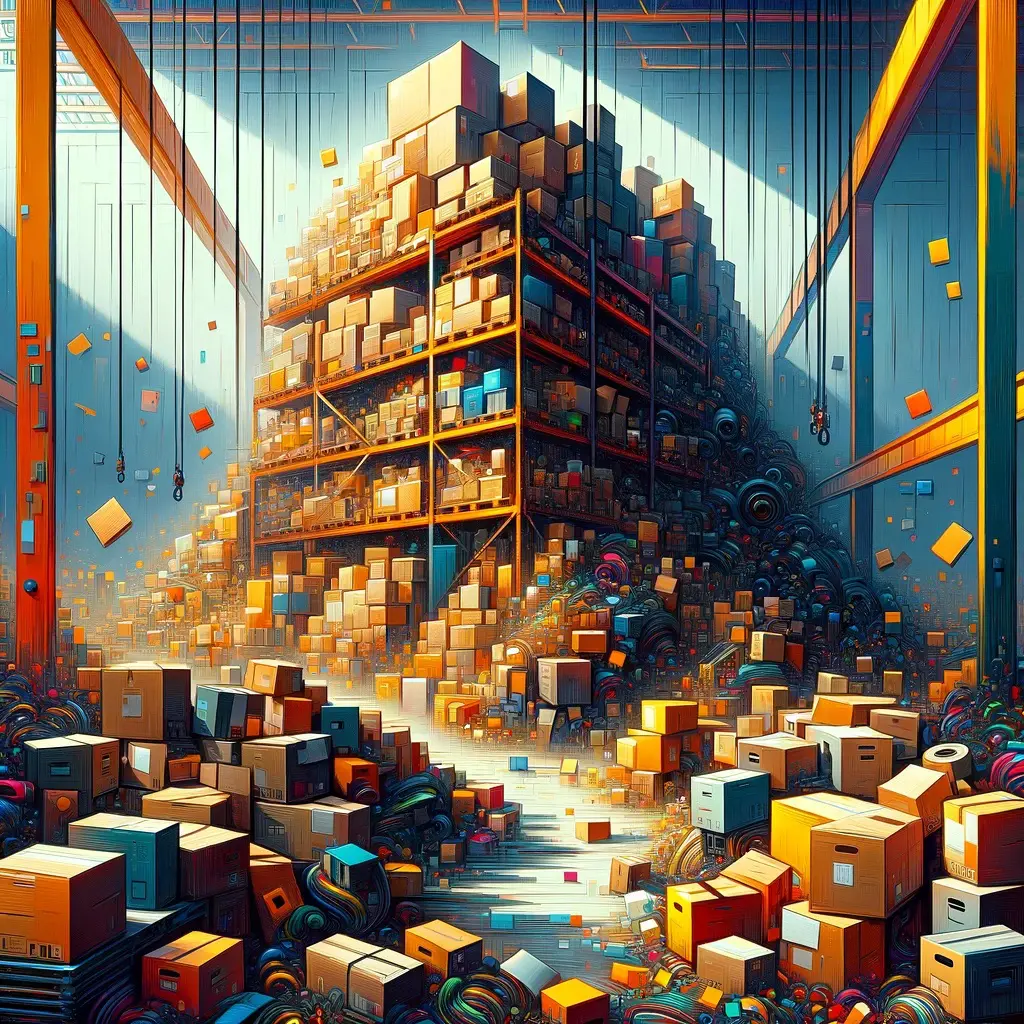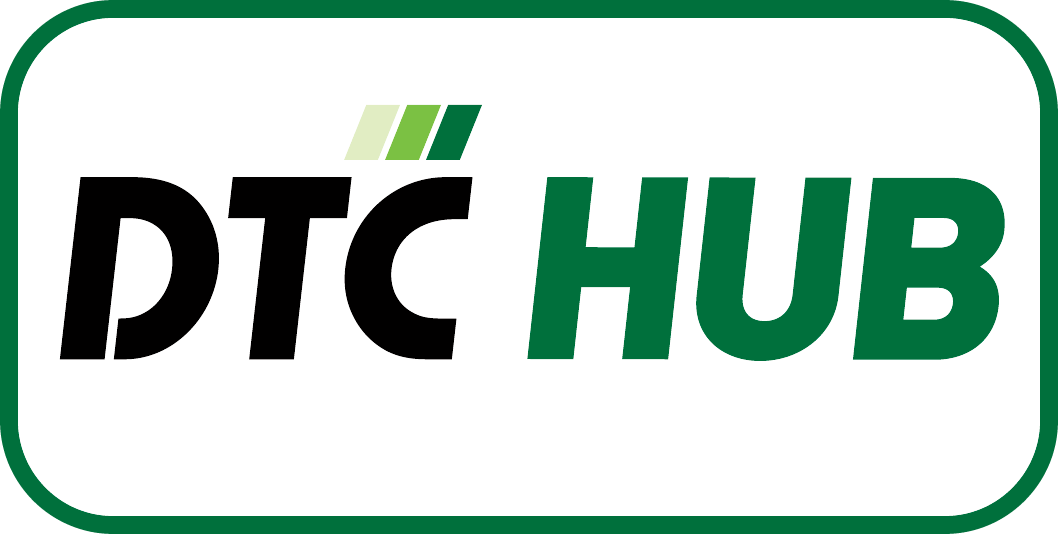Stock control is an essential part of operating any business which manufactures or sells products. It brings its challenges though, including the topic of this article “How to prevent stockouts and overstocking”. We define what stockouts and overstocking are, discuss the costs associated with each as well as provide insight into how automated reordering systems can help.
What are stockouts?
A stockout is an event that occurs when an organisation is unable to fulfil a customer order for a product because it has run out of stock. This is typically caused because:
- Higher demand than forecast – customer demand for the product has been higher than was previously forecasted
- Manufacturing issues – there may be issues with manufacturing such as staff shortages, machine breakdowns and/or supply chain issues
- End of life/obsolescence – a product may have reached its end of life and so, the customer deliberately has an out of stock situation when customers attempt to order

What is overstocking?
Overstocking is the opposite of stockouts but in different ways is equally as damaging. Sometimes also called “excess stock” or “surplus stock”, this arises when stock levels are excessive and over and above sales levels over a period.
- Inaccurate sales forecasting – customer demand for product ranges has been lower than forecast. This could be due to a change in the market and/or inaccuracies in the data or forecasting system
- Stock control issues – there may be various issues relating to stock control. The stock might be in the wrong place (e.g., too much in one store, or perhaps in a warehouse), the stock may not have been recorded in systems correctly, etc.,
- Minimum or bulk buying discounts – many organisations practice a sometimes false economy in falling for suppliers’ minimum order quantities or bulk buying discounts. Whilst these are appealing at the time, they often lead to overstocking issues

Costs associated with stockouts and overstocking
There are costs associated with both stockouts and overstocking, these are discussed below:
Stockout costs
The list below is just a few examples of some of the most likely stockout costs:
- Associated costs – sometimes to eliminate stockouts quickly organisations incur associated costs. This could include:
- Extra staff costs – sometimes extra staff can be hired to manufacture stock
- Overnight or courier delivery fees – paying extra to get finished goods, parts, and raw materials quickly into stock
- Data inaccuracies – historical sales data and purchasing inventory data will be distorted by stockouts, this causes corruption and difficulties with planning and decision-making as forecasting systems struggle with inaccuracies in inventory data
- Dissatisfied customers – stockouts can cause short to long term relational issues with customers. They may decide to shop elsewhere in future. In the case of other companies, your stockout might cause them a stockout situation too. Ultimately, stockouts are likely to create disappointment and damage your brand and customer satisfaction and loyalty
- Employee morale issues – stockouts are hard to manage and can be stressful to employees. They may face a barrage of customer complaints at a time when they could be working harder and maybe working overtime. If stockouts are frequent, employees can become demotivated, and it could become a factor in staff retention statistics
- Lost sales – naturally, where you are out of stock, there are no sales. This impacts sales and profitability and potentially lost customers who are likely to look elsewhere to buy similar products. Over a period, this could also create a reduced market share, if enough customers leave
- Reputational damage – one-off stockouts can probably be managed. Frequent and persistent stockouts (particularly uncommunicated) are likely to cause both brand and reputational damage, the consequences of which are detailed in other costs listed here

Overstocking costs
There are costs associated with overstocking, these include:
- Cash flow issues – stock is an asset, the more you hold the less you have of another asset, particularly CASH or the opportunity to invest in plant and equipment, etc., A lack of cash flow is damaging to a minimum, stock levels should be kept to a minimum, whilst eliminating possible stockout situations
- Deterioration – stock deteriorates over time, this is particularly the case for perishable goods such as food and pharmaceuticals. Where deterioration arises the only solution available is expensive product write-off
- Discounting – to reduce overstocking levels, a frequent strategy is to discount. Not only does this cost money in terms of lost sales at the full price, it also can devalue the brand with customers waiting for the next sale before ordering (particularly if discounting is frequent and repeated)
- Increased storage costs – overstocking costs money in the form of additional storage space, warehousing costs (including handling management, security, and insurance costs)
- Obsolescence risk and write-off – if kept long enough an item of stock may become obsolete. This is particularly the case in certain industries, e.g. technology, and fashion. This will lead to either discounting or scrappage
- Write-offs – the worst-case scenario is product write-off. This is where products are disposed of with no income. This may be due to obsolescence, deterioration, etc., and is extremely damaging to profitability. Write-off is also damaging to the environment with many products ending up in landfill sites

Introducing automated reordering
First emerging as long ago as the 1960s, automated reordering systems have been known under many names and utilise technology to ensure that optimal stock levels are maintained within an organisation. Configuration of system parameters is especially important, if these are correct, stockouts and overstocking are highly likely to be avoided.
Automated reordering systems use a range of criteria (e.g., past sales, sales forecast (including seasonal adjustments), etc.,) to reorder when stock levels fall below a defined level. Reordering can be configured to be entirely automatic or could require manual approval. Automated reordering systems work optimally if they are integrated with supplier systems (like we offer here at DTC, through the DTC Hub). This process streamlines the supply chain procurement process, reduces manual intervention and human error.
Can automated ordering be manual?
By its nature, automated ordering is via an IT system and relies on ERP and inventory management software, etc., and algorithms to predict, manage, and reorder stock. At its heart, automated ordering reduces manual intervention through business process reengineering. Of course, there is some human intervention in system configuration in areas including reorder points, minimum stock level, chosen supplier, purchase price, etc.,
How do automated reordering systems prevent stockouts
Automated reordering systems employ various features to prevent stockouts and ensure the availability of products when needed.
| # | Description | Detail |
| 1 | Automated alerts | Sends automated alerts when inventory reaches reorder points |
| 2 | Data accuracy | Ensures accurate historical data to improve forecasting future demand |
| 3 | Demand forecasting | Utilises accurate demand forecasting to anticipate future stock needs |
| 4 | Inventory monitoring | Constantly monitors inventory levels to avoid stockouts |
| 5 | Inventory optimisation | Optimises inventory levels for efficient stocking |
| 6 | Lead time management | Efficiently manages lead times for timely replenishment |
| 7 | Real-time inventory | Tracks inventory levels in real-time for proactive reordering |
| 8 | Safety stock | Maintains safety stock to handle unexpected demand fluctuations |
| 9 | Supply chain collaboration | Collaborates with suppliers to ensure timely deliveries |
| 10 | Supplier evaluation | Evaluates supplier performance and reliability |
| 11 | Vendor performance | Monitors vendor performance for consistency |
| 12 | Workflow automation | Automates workflow for efficient order processing |
How do automated reordering systems prevent overstocking
Automated reordering systems also prevent overstocking by employing various features to optimise inventory levels.
| # | Description | Detail |
| 1 | Cloud-based accessibility | Provides remote access for monitoring and reordering |
| 2 | Data analytics | Utilises data analytics to adjust orders based on trends |
| 3 | Demand forecasting | Analyses historical data to predict future demand accurately |
| 4 | Historical data analysis | Utilises historical data to identify demand patterns |
| 5 | Inventory monitoring | Monitors inventory levels to prevent overstocking |
| 6 | Inventory optimisation | Optimises inventory levels to prevent overstocking |
| 7 | Just-in-time inventory | Implements just-in-time inventory practices to minimise excess |
| 8 | Safety stock | Maintains safety stock for unexpected fluctuations |
| 9 | Supplier collaboration | Collaborates with suppliers for efficient order fulfilment |
| 10 | Supplier evaluation | Evaluates supplier performance for reliability |
| 11 | Warehouse optimisation | Optimises warehouse space and layout to prevent overstocking |
Conclusion
Concluding our look into stock control management and preventing stockouts and overstocking, we hope you will agree these are essential to avoid. We began by defining what stockouts and overstocking are with some of the most common reasons that they arise.
There are many costs associated with stockouts including extra costs incurred, dissatisfied customers, employee morale issues, lost sales, as well as reputational damage. Similarly, there are costs associated with overstocking, these include poor cash flow management, product deterioration, the need for discounting, increased storage costs, obsolescence risk and write-offs.
We went on to conclude that automated reordering is a method of largely eliminating both stockouts and overstocking. To illustrate why we provided tables of how automated reordering systems prevent both stockouts and overstocking.
Contact us
We trust that you found this article on automating reordering to prevent stockouts and overstocking insightful. Effective inventory management is now more crucial than ever before, and implementing the recommendations and insights from this article can help you achieve your stock control objectives.
Well, that is the conclusion of our article about “How to prevent stockouts and overstocking”. We are sure you will agree that stock control is now more important than ever before. Why not join us by implementing the recommendations given in this article?
Become a part of the DTC Hub and benefit from our automated reordering processes, just-in-time parts supply, advanced stock control methods, and rapid just-in-time ordering, as well as numerous other beneficial features.
To get in touch with DTC, contact us in these ways:
- Call us at – 023 8025 1100
- Email us at – sales@dtc-uk.com
- Contact page – Visit our contact page by clicking here

